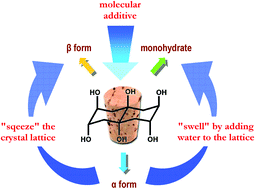Additive induced polymorphous behavior of a conformationally locked hexol†
Abstract
The influence of molecular additives on the crystal structure adopted by a C2h symmetric, conformationally locked

* Corresponding authors
a
Department of Organic Chemistry, Indian Institute of Science, Bangalore, India
E-mail:
gm@orgchem.iisc.ernet.in
Fax: +91-80-23600283
Tel: +91-80-22932850
The influence of molecular additives on the crystal structure adopted by a C2h symmetric, conformationally locked

 Please wait while we load your content...
Something went wrong. Try again?
Please wait while we load your content...
Something went wrong. Try again?
G. Mehta, S. Sen and K. Venkatesan, CrystEngComm, 2007, 9, 144 DOI: 10.1039/B613949C
To request permission to reproduce material from this article, please go to the Copyright Clearance Center request page.
If you are an author contributing to an RSC publication, you do not need to request permission provided correct acknowledgement is given.
If you are the author of this article, you do not need to request permission to reproduce figures and diagrams provided correct acknowledgement is given. If you want to reproduce the whole article in a third-party publication (excluding your thesis/dissertation for which permission is not required) please go to the Copyright Clearance Center request page.
Read more about how to correctly acknowledge RSC content.
 Fetching data from CrossRef.
Fetching data from CrossRef.
This may take some time to load.
Loading related content
